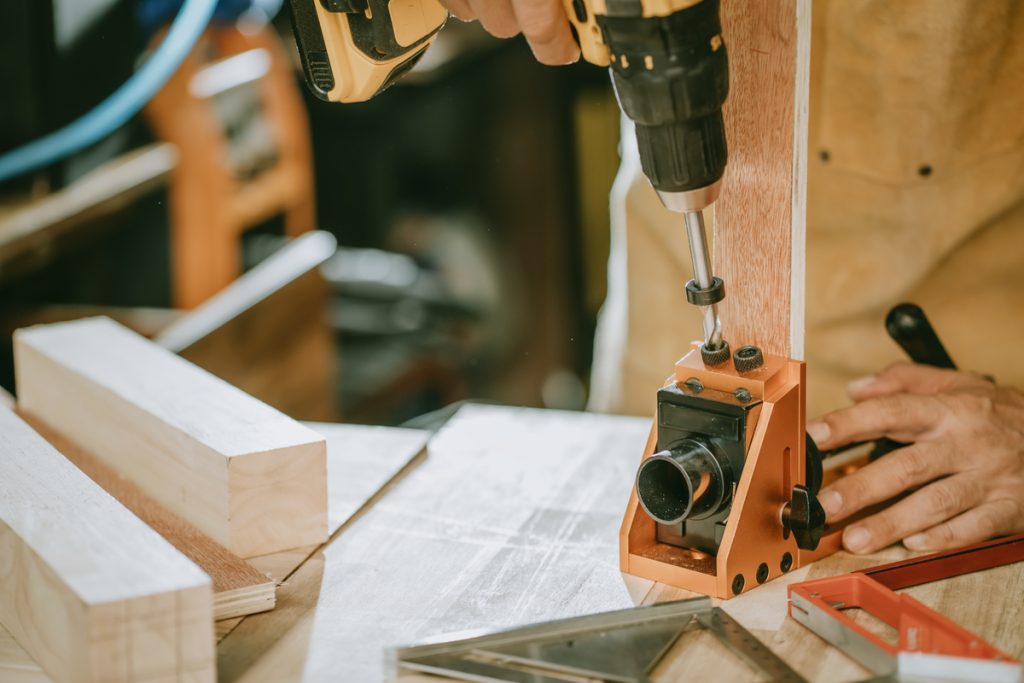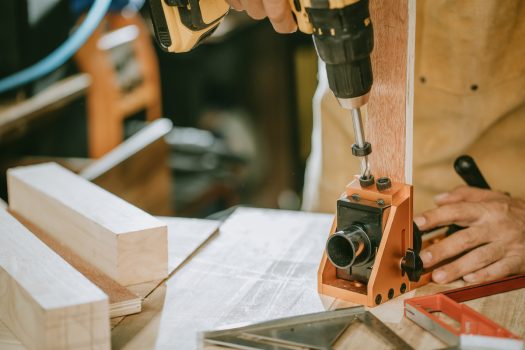Do I Need A Jig For Dowels?
While dowel jigs can be handy if you want to drill some holes to reinforce something with dowels, they’re not absolutely necessary, and you can definitely get by without one. We’ll explain how you can do it here.
Doweling jigs are so useful because you need to make sure that the holes you’re drilling on each piece of wood line up with each other, but you can do that without one.
The simplest way is to take a piece of scrap wood that you don’t need for anything else. Make sure that it’s about the same size as the other pieces of wood you’re going to use.
Carefully mark two points on it that are the right distance apart, and then hammer a nail into each of those points.
Use a pair of bolt cutters to take the nail’s heads off, and you’ll be left with fairly sharp points in their place. You can now press these into the points you’ve chosen for your dowels.
When you take them off your wood, they’ll leave marks in the places where you need to put your dowels. Repeat as necessary for however many dowels you need to use.
This isn’t 100% accurate, but it’s good enough for most things and can be done very quickly – it’s certainly a lot quicker than measuring everything out manually.

How Do You Use A Self-Centering Dowel Jig?
Self-centering dowel jigs are loved by woodworkers everywhere and make doweling far easier than it would be otherwise. The main part of the jig is a steel block with holes for the drill bit – this helps to guide the drill bit and keep it from going anywhere it shouldn’t.
The holes are located exactly in the center of the block and are perpendicular. The block also has a screw running through it and turning this screw moves each side of the jig the same amount.
This is where the “self-centering” part comes in. As you clamp the jig to the wood, the holes on the jib are centered on the wood automatically.
In most cases, all you’ll need to do here is mark the dowel location carefully on the wood, including the center lines, and then make sure the jig is lined up properly with the center lines. Then, just start drilling.
Depending on the project you’re working on, you might need to make sure the holes are drilled to a specific depth, and if so, then you can use a stop collar to stop the drill from going too far.







